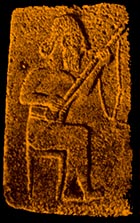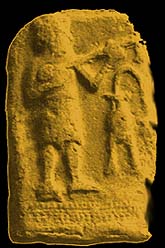Paul’s Guitar Museum
8. Hittite Sculptures
 |
Paul:
The Gate Relief from Sendschirli – now in the Vorasiatische Museum – Berlin |
 |
Paul: Here is a LONGED NECKED LUTE type instrument Now in the British Museum
|
 |
Paul:
The Gate Relief from Sendschirli – now in the Vorasiatische Museum – Berlin |
 |
Paul: Here is a LONGED NECKED LUTE type instrument Now in the British Museum
|